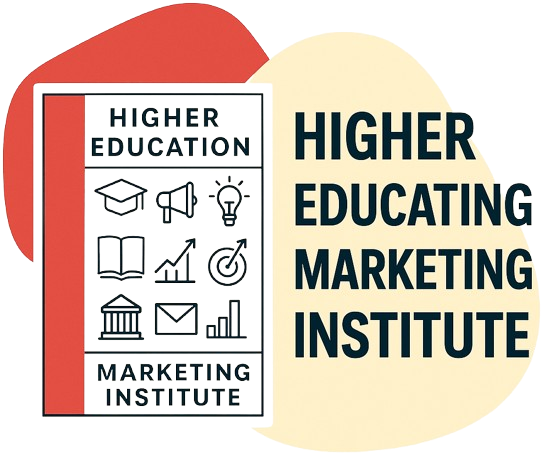Is it possible that the key to boosting enrollment rates in higher education lies in a well-crafted inbound marketing strategy?
You may have heard that inbound marketing, with its focus on creating valuable content and experiences tailored to individuals, has been making waves in the business world. But it's not just for businesses.
Higher education institutions can also harness its power to attract, engage, and delight prospective students. Don't you want to know how?
It's time to uncover the untapped potential of inbound marketing in your higher education institution. The insights you'll gain might just change everything.
Key Takeaways
- Inbound marketing in higher education involves creating valuable content and using analytics to refine strategies.
- Student personas are important for tailoring content, messaging, and services to resonate with the audience.
- Compelling and relevant content, guided by student personas and content analytics, is crucial for engaging the audience.
- Social media platforms offer opportunities to connect with different demographics and should be selected carefully to tailor content and engage alumni.
Understanding Inbound Marketing

Before diving into the specifics of inbound marketing in higher education, it's crucial that you grasp what inbound marketing actually means. In essence, it's a strategy that focuses on attracting customers or leads through company-created Internet content, thereby having potential customers come to the company rather than marketers vying for their attention.
This method relies heavily on Inbound Tools and Marketing Analytics. These tools, such as SEO, blogging, and social media, can help you attract your target audience and engage them more effectively. They're not just about broadcasting your message, but about creating a two-way conversation that benefits both parties.
Marketing Analytics, on the other hand, play a pivotal role in understanding and improving your strategies. They allow you to measure, manage, and analyze your marketing performance to maximize its effectiveness and optimize return on investment. So, you're not just throwing content out there and hoping it sticks; you're making informed decisions based on data.
In higher education, this could mean creating valuable content that answers prospective students' questions about various programs or campuses, then using analytics to see what works and refining your strategy accordingly. So, in a nutshell, that's what inbound marketing is all about.
Importance of Student Personas
Understanding your target audience is crucial, and that's where student personas come into play in an inbound marketing strategy for higher education. Persona development isn't just a fancy term; it's essential for creating a marketing strategy that truly resonates with your audience.
Think of student personas as detailed representations of your ideal students. They're based on real data about student behavior combined with educated speculation about their personal histories, motivations, and concerns. By crafting these personas, you're essentially putting a face to your data, making it easier to understand, relate to, and ultimately, reach your target audience.
Student personas guide you in tailoring your content, messaging, and services to meet the specific needs of different student groups. This leads to more targeted outreach, where your resources are optimally utilized.
In essence, you're not just shooting in the dark anymore. With student personas, you're aiming at a clear target, making your marketing efforts more effective and efficient.
Effective Content Creation

Once you've nailed down your student personas, it's time to turn your focus to crafting compelling and relevant content that'll truly engage your audience. Remember, in the realm of higher education, your audience isn't just browsing; they're seeking information, solutions, and insights.
Using content analytics, you can gain a deep understanding of what content resonates with your audience and what doesn't. This data-driven approach enables you to refine your content creation strategy effectively. You'll know what topics to focus on, the right tone to adopt, and the best format to present your content.
Audience engagement should be at the heart of your content creation. You're not just broadcasting information; you're starting a conversation. Ask questions, encourage feedback, and respond to comments. Make your audience feel valued and heard. By doing so, you'll build a strong connection with them, fostering loyalty and trust.
The key to effective content creation lies in being relevant, engaging, and insightful. Use your student personas as a guide, incorporate content analytics to streamline your approach, and prioritize audience engagement. This way, you'll create content that not only attracts but also retains and converts your audience.
Social Media for Higher Education
Building on effective content creation, it's vital to recognize the role of social media in higher education. Social media serves as a platform where your crafted content can truly shine and reach a wider audience. From Facebook, LinkedIn, Instagram, to Twitter, each platform offers unique opportunities to connect with different demographics. This is where Platform Selection comes into play. It's essential to understand where your target audience spends their time online to maximize your content's exposure.
Consider the following when designing your social media strategy:
- Platform Selection: Tailor your content to the platform you're using, whether it's a short tweet or a detailed LinkedIn post.
- Alumni Engagement: Use social media to keep alumni connected and invested in the institution.
- Visual Content: Leverage the power of visuals to capture attention and convey your message quickly.
- Timely Updates: Keep your audience informed with timely updates about campus events, admissions, or course details.
SEO Strategies in Education

You can't overlook the importance of a robust SEO strategy in higher education, as it's a critical tool to increase your institution's online visibility and attract potential students.
A solid SEO plan is built on two key elements: keyword research and link building.
Keyword research is the foundation of your SEO strategy. You need to understand what terms potential students are using to search for institutions like yours. Once you've identified these keywords, incorporate them into your content, meta descriptions, and page titles. This ensures your site will show up when students are doing their research.
Link building, on the other hand, involves securing backlinks from other reputable sites to boost your own site's credibility and ranking. You can guest post on educational blogs, participate in relevant forums, or collaborate with influencers in your field. Remember, the more high-quality backlinks you have, the better your site's reputation in the eyes of search engines.
Conversion Tactics for Prospective Students
While an effective SEO strategy lays the groundwork for attracting potential students, it's equally crucial to have a conversion strategy in place to turn these prospects into enrolled students. This is where your conversion tactics come into play.
To create a successful conversion strategy, consider the following:
- *Webinar Engagement:* Use webinars to provide valuable, engaging content. This gives prospects a taste of what they could experience as students. Make sure to follow up with attendees and non-attendees, turning their interest into action.
- *Personalized Emails:* Nothing says 'we want you' like a personalized email. Use automation tools to send targeted messages based on a prospect's interests and interactions with your institution.
- *Optimized Landing Pages:* Your landing page is the first impression prospects have of your institution. Ensure it's optimized for conversion with clear calls to action and compelling content.
- *Interactive Virtual Tours:* Allow prospects to experience your campus from anywhere. This interaction can increase their interest and desire to enroll.
Measuring Inbound Marketing Success
To ensure your inbound marketing efforts are paying off, it's essential to measure their success through key performance indicators (KPIs). These metrics provide concrete evidence of the effectiveness of your strategies and tactics in achieving your marketing goals.
You'll need an effective analytics integration system to collect, analyze, and interpret data from various sources. This system should be capable of tracking your website's traffic, social media engagement, and the performance of your content. It's crucial to understand which channels are driving the most traffic and conversions. This information will help you to optimize your strategy and allocate resources more efficiently.
Another critical aspect of measuring success is ROI calculation. You've invested time, money, and resources into your inbound marketing strategy, and you want to ensure you're seeing a return on that investment. By comparing the cost of your efforts to the revenue they generate, you can calculate the ROI. This will give you a clear picture of the profitability of your inbound marketing efforts.
Conclusion
So, you've made it through the labyrinth of inbound marketing in higher ed. Ironic, isn't it? You've spent years educating others, and here you are, learning again. But that's the beauty of education; it never ends.
Now, equipped with student personas, killer content, savvy social media, SEO tactics, conversion tricks, and metrics – you're ready to attract, engage, and convert the next generation of learners.
Who knew marketing could be as rewarding as a graduation day?




